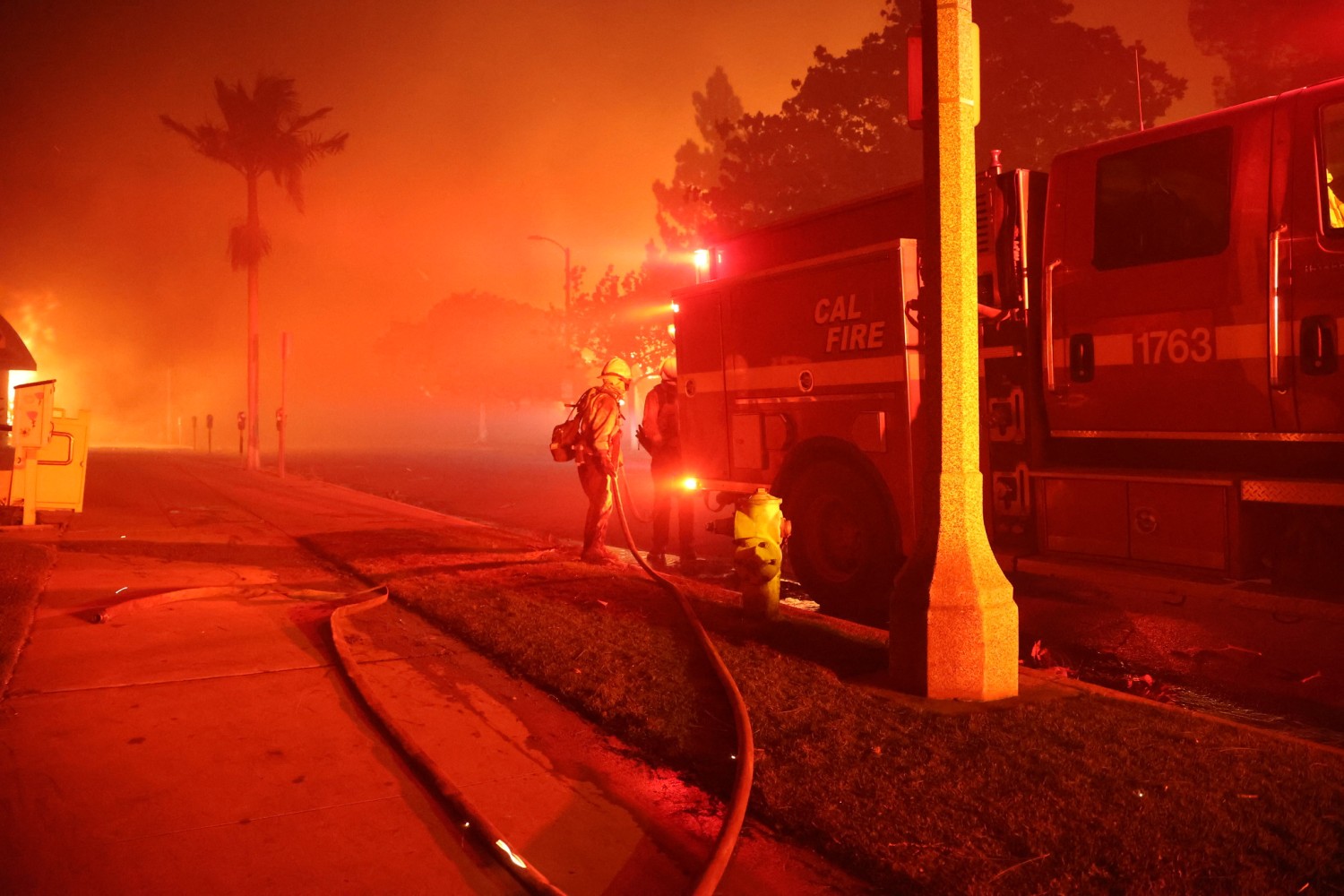
A firefighter filling a trash can with pool water during the devastating 2025 Los Angeles fires tells a story more complex than mere water shortage. The crisis exposed how aging infrastructure, designed for a different era, has left one of America’s most fire-prone cities vulnerable to modern mega-fires.
Within 15 hours of the Palisades fire’s start, three million-gallon tanks meant to supply fire hydrants ran dry, but the problem wasn’t lack of water. The State Water Project held record reserves, but the city’s pump-and-storage system, designed to fight fires at several homes simultaneously, proved woefully inadequate for a blaze that would consume hundreds of structures within hours.
The crisis revealed a startling reality: 24% of hydrants within the Palisades fire perimeter were outdated “red-top” models from the 1940s, featuring single 2.5-inch outlets that the American Water Works Association no longer considers suitable for normal fire protection. Modern hydrants offer larger 4-inch outlets and multiple connection points, providing greater water volume and operational flexibility that firefighters prefer over high pressure when battling blazes.
The situation proved particularly critical during the fire’s first 30 minutes when crews had their best chance to contain it. In the crucial area where flames first threatened homes near Bienveneda Avenue, firefighters encountered these obsolete hydrants precisely where they needed maximum water delivery capability. The fire’s exponential growth in these early moments (at a rate of running a four-minute mile) – expanding to 700 acres within three hours – raises questions about whether modern hydrants might have made a difference.
High-velocity Santa Ana winds accelerated the fire’s spread and grounded water-dropping helicopters, eliminating crucial aerial support. In a 50-hour timeframe, there were over 5,500 homes burned with over 1,200 other structures in the Palisades and over 6,000 homes burned with over 3,200 other structures in Altadena. The intense heat at these locations triggered a cascade of infrastructure failures, from power outages to damaged water pipes. Making matters worse, the Santa Ynez Reservoir, which normally would have provided pressure to resupply storage tanks in the Palisades, had been emptied for maintenance a year before the fires began.
The aftermath revealed longer-term vulnerabilities, with multiple zip codes placed under boil water notices due to ash and debris contamination during low-pressure periods. The city now faces massive infrastructure challenges: repairing damaged water lines, sewer lines, high power transmission lines, and roadways, replacing outdated hydrants, widening streets for fire truck access, installing sloped curbs for evacuation routes, burying utility lines to prevent future fire triggers, and updating the regional communication fire-alert systems.
Los Angeles County has responded with a $32.2 million Fire Recovery Fund for immediate relief for affected homeowners, renters, workers, small businesses, and nonprofits while awaiting longer-term state and federal resources, while Governor Newsom has proposed $2.5 billion in emergency funding. The EPA and Army Corps of Engineers have committed to expedited debris removal by this time next year. However, these measures address symptoms rather than the core problem: an urban water system never designed to fight modern mega-fires.
The county has also called for a comprehensive performance review of its water systems, focusing on Los Angeles County Waterworks District 29, which serves Malibu and unincorporated areas of the Santa Monica Mountains. This investigation will examine system performance during the fires, identify necessary improvements, and analyze the administrative, environmental, and permitting challenges that may have delayed crucial infrastructure for planned water system project improvements.
This crisis demands a fundamental reimagining of urban wildfire defense. As climate change brings longer, more intense fire seasons, Los Angeles must upgrade its infrastructure not just to current standards but to meet future challenges. The lessons learned from this disaster must inform a new generation of dire need to revise safety requirements that better protect our communities from the intensifying threat of climate-driven mega-fires, starting with the basic building blocks of fire protection – our hydrants and water delivery systems.
Jack Hillbrand AIA, Architect & Landmarks Commissioner
for SMa.r.t. – Santa Monica Architects for a Responsible Tomorrow
Samuel Tolkin, Architect & Planning Commissioner; Thane Roberts, Architect;
Mario Fonda-Bonardi AIA, Architect; Robert H. Taylor AIA, Architect;
Dan Jansenson, Architect & Building and Fire-Life Safety Commission; Michael Jolly, AIRCRE; Jack Hillbrand AIA, Architect & Landmarks Commissioner; Phil Brock, SM Mayor (ret)













